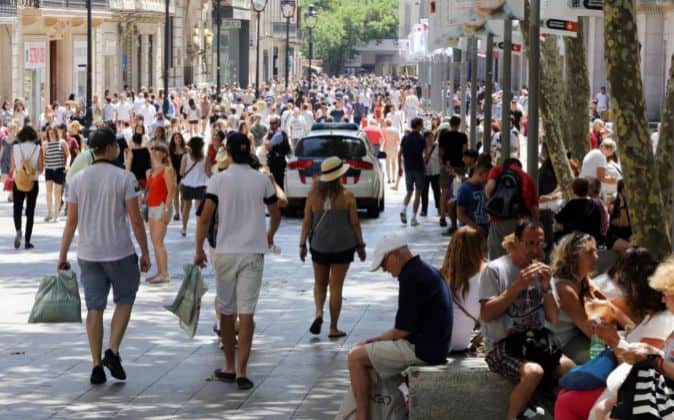Municipal data confirm that the trend in Barcelona towards a sustainable mobility model is evident. More than 50% of the public space dedicated to mobility is now allocated to pedestrians.
As a result, Barcelona is immersed in an urban transformation that is redefining its landscape and its form of mobility.
The emblematic reform of Via Laietana, for example, an artery designed to connect the port with the Eixample at the beginning of the 20th century, is just one example of the commitment to prioritize the pedestrian to the detriment of the private vehicle.
Green axes and the redefinition of the city, sustainable mobility model
In November 2020, the presentation of the “green axes” marked a high point in the materialization of this urban vision. The automobile ceased to be the protagonist in the Eixample, designed by Ildefons Cerdà, to become a guest.
Via Laietana, Pi i Margall, la Rambla, Glòries and other emblematic arteries join a list that demonstrates the firm commitment to sustainable and active mobility.
Just 10 years ago, this transformation would have seemed crazy. However, today it is a palpable reality: a dozen main arteries have lost a third of their traffic lanes in the last 15 years.
Bus lanes, sidewalk extensions and bicycle lanes have emerged, reducing the space for the automobile by 33%.
Change in modal share and road congestion
The modal share of private vehicles has fallen below 20% for the first time. More than 80% of trips are now made sustainably, actively or by public transport.
The data reveal that metropolitan drivers choose to travel through the city along the outer ring roads, such as Gran Via or Aragó, rather than into the city center.
The perception that time spent commuting by car does not pay off due to reduced lane availability is beginning to affect city dwellers.
By the end of 2023, the distribution of public space reflected a significant change: 50.5% was allocated to pedestrians, while cars and motorcycles shared 34.3%.
Challenges and opportunities for a sustainable city
Barcelona faces this paradigm shift in mobility with challenges and opportunities. Despite being one of the largest European cities with the fewest square meters of green space per inhabitant, the city has managed to cushion this shortfall by planting 1.4 million trees, almost one per citizen.
However, significant differences persist between districts, highlighting the need to address equity in access to green spaces.
Looking at the data by district, Sant Martí allocates more space to pedestrians, while Sarrià-Sant Gervasi and Sants-Montjuïc maintain a ratio where the carriageway for cars exceeds the pedestrian space.

